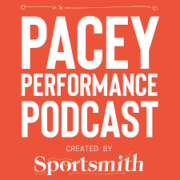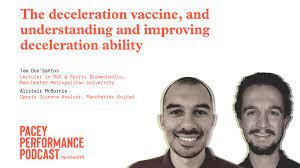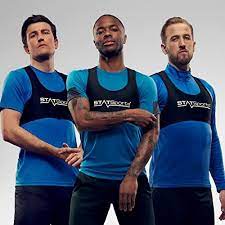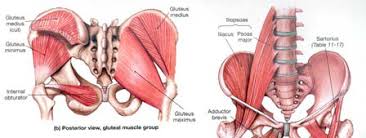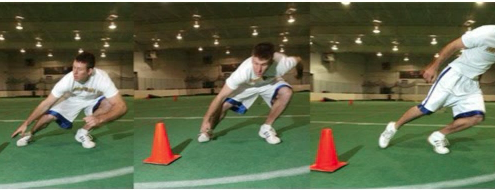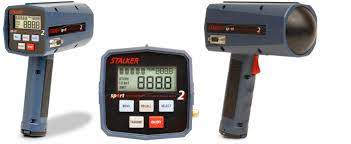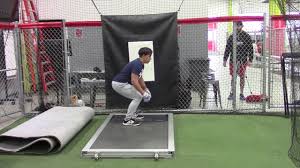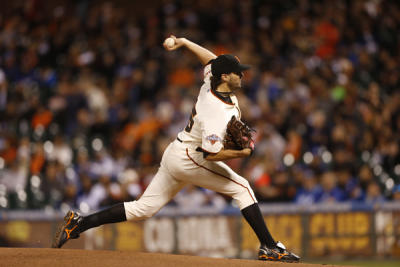Pacey Performance Podcast REVIEW- Episode 380 Alistair & Tom Part 2
This blog is a review of the Pacey Performance Podcast Episode 380 – Alistair McBurnie & Tom Dos’Santos – Part 2
Alistair McBurnie
Alistair is a sports science analyst for Manchester United’s first team, having worked his way up from coaching at academy level.
Tom Dos’Santo
Tom is a lecturer at Manchester Metropolitan University, where he teaches strength conditioning and sports biomechanics. Previously, he’s worked at the University of Salford, and England Northwest and Manchester Thunder netball squads.
🔊 Listen to the full episode here🔊 Listen to Part 1 here
Discussion topics:
Do we think the boot worn sensors are going to be the next thing to integrate within performance departments?
”@Alastair: I think so. I think it’s just the next level really, isn’t it? We talk about whole body loading and evaluating the key performance metrics we currently have which might include total distance, high speed running, sprinting distance, accelerations, and decelerations. I’m not telling you things that are reinventing the wheel there. I think everyone are using them as the key monitoring metrics, in particular in football.
Individualising Training
We want to make athletes better at performing these high intensity actions and to just have an insight into the volume. This player performs, you know, 200 metres of sprinting distance in a game. That’s great from a volume perspective and programming of weekly and monthly training volumes.
But in terms of how are we actually programming how are they achieving that movement (volume) and information about the movement strategies and the special temporal variables that you get from these kind of technologies I think will give us more insights into the specific drills that can target them because if we’re looking at horizontal deceleration and we uncover that a player’s ground contact time may be a bit too elongated, we’re then stripping that back and going, right, what can we do in the gym to make sure that we’re actually increasing elements that are going to improve ground contact time or stiffness if you’ll like?
So I think when we get to a point where we can move a lot of the stuff that is typically done in a lab and moving it to the field and almost ”testing without testing” players within their athletic development training programs these technologies are able to pick up every single action that they’re doing. So it becomes a point where we don’t have to worry about getting athletes in for a testing battery. It can almost be done as part of the day-to-day practices, as part of the warm-ups, etc.”
In terms of developing the qualities needed for good deceleration ability in the gym, when people look towards that, what should people be focusing on based on what we’ve just spoken about for the last 45 minutes?
”@Tom: So I think it’ll be very similar to change of direction, especially when we think about that angle-velocity trade off again. So we think the shallow change of directions, being more velocity dominant, more concentric and reactive strength dominant, whereas particularly anything 60 degrees, 90 degrees and above are probably a bit more of eccentric strength training focused.
So in terms of physically preparing athletes, we like to think about specific musculature and segments that we want to target. And then maybe think about the underlying physical qualities and strength qualities. Let’s discuss the musculature first, and then some particular physical qualities and training methods. It should be a mixed multi-component and a multi-segmental model and It’s not just one specific area, or one training modality that is going to bulletproof our athletes.
Trunk Control
And I think the kind of the training recommendations that myself and Alistair will go through are probably applicable not only for deceleration, but change of direction, curvi-linear speeds, accelerations and high speed running. So trunk control, if we work our way down, trunk control is going to be a massive. Trunk contains approximately half of the body’s mass and that needs to be supported typically on one limb where we’re doing these deceleration and change of direction actions. And we need good control in the frontal plane and the sagittal plane.
So there’s a lot of evidence showing that from a change of direction perspective anyway, lateral trunk flexion is going to increase our knee valgus moments because we get laterally directed ground reaction force vector that increases the moment arm and subsequently increases loading. So frontal plane trunk control is going to be massive.
Technique modification training so basically good cuing and good coaches are telling athletes to adopt a bit more of a neutral trunk posture, and make sure they are in their correct alignment. I know some people have used medicine balls to try and reinforce optimal trunk alignment. I think Enda King and the Sport Surgery Clinic have shown it to be quite effective.
Our dynamic trunk stability exercises and balance training has also been shown to be quite effective at improving frontal plane and transverse plane trunk control. In terms of correcting sagittal plane and avoiding anterior trunk displacement, probably in the opposing muscle groups and the posterior aspect especially erector spinae and glute max exercises target that trunk control and reinforce that bracing and again, instructing our athletes to try and avoid excessive forward trunk lean when we’re decelerating and performing these change of direction actions.
And there’s also evidence showing these deficits in trunk control can increase ACL injury risk and have been prospectively shown to increase ACL injury risk. So with that multi segmental model focusing on correcting that anterior pelvic tilt, getting that dynamic trunk stability in the sagittal and frontal plane seems to be key.
Hip Complex
Then, because from the biomechanical aspect during these decels and change of directions we create these large hip flexor moments and more externally applied knee flexor and hip flexor moments. So they need to be supported and counteracted with an internal hip extensor and knee extensor. So again, the musculature around the glutes, and external hip rotator strengthening is going to be key to tolerate those large hip flexor moments, trying to resist that change in hip flexion essentially. But also it’s going to be key in terms of frontal plane control particularly the femur. So again, there’s evidence showing that a knee valgus can increase knee valgus loading, like a two degree difference can increase the torque by around about 40 Newton metres.
And by having high levels of glute activation it can resist and oppose and support that potential knee valgus loading and preventing that knee valgus position. So that would be key from that perspective, but it’s also key for facilitating braking.
Anterior Aspect
If we start going onto the anterior aspect, so the quadricep strengthening is going to be key, particularly for those eccentric muscle actions and to support those large external knee flexor moments. So we’re getting internal knee extensor moment. So we have high levels of quadricep activation, but we have this kind of performance-injury trade-off. So we need the quadriceps for the braking aspect and we need them for the propulsive aspect if we want to go and re-accelerate and perform a change the direction.
However, if we don’t have high levels of co-activation of the hamstrings, this can increase our anterior tibial shear. So again, I’m going to focus on ACL injuries because I love ACL injuries, but it’s kind of like a multi-planar mechanism. So we get our anterior tibial shear, which can result in this anterior tibial translation of the tibia relative to the femur. That seems to be one of the primary contributors of ACL loading.
If we get these aggressive quadricep activation at these extended knee postures, typically within 0-40 degrees where the quadriceps insert, we can get this anterior tibial translation. So although we do need, I’m not saying we avoid high levels of quadricep activation, we do need it, but we need to make sure we get high levels of co-activation of the hamstrings as well. Hamstrings are bi-articular, originating in the pelvis and insert into aspects of the tibia and the fibular, but their role is to prevent that anterior tibial translation to try and oppose and create a posterior shear force. And again, there’s lots of evidence showing that having weaker hamstrings and fatigued hamstrings can increase ACL loading, and there are some musculoskeletal modeling showing that.
So although we do need high levels of quadricep activation, we need to make sure we get the high levels of co-activation of the hamstrings as well. And that could be a whole range of different fast eccentric velocity exercises, slow velocity exercises, isometric, eccentric, and even potentially some concentric strengthening exercises as well.
Lower Limb
If we move down the limbs, we’ve focused on the knee and the hip there and the trunk. There is a whole debate around the gastrocnemius, but the gastrocnemius is a kind of antagonist to the ACL and can increase ACL loading. There’s some evidence showing that we need to increase soleus activation, particularly around the ankle, the ankle acts like a kind of dampener and a shock absorber for deceleration and our change directions. So although we need that quadriceps, some people argue that soleus activation is key.
How you go about isolating soleus without getting gastrocnemius would be quite difficult. I probably don’t have the answers there. Probably some more intelligent people might be able to answer that. And then we also have a kind of like our intrinsic foot stabilizer muscles and that kind of perennial muscles as well to try and prevent those excessive inversion angle of velocities because lateral ankle sprains are a common injury mechanism during these decel and change direction actions. So specific exercises to target ankle stability and foot stability.
So they’re the key muscles and musculature that we want to target. I’m not saying that this is the right or only way to go about it. It’s a whole different range of methods. My whole philosophy about transfer of training is focused on the adaptation that we’re trying to elicit. I’m not going to say we must do Olympic lifts or must do this as long as you’ve got a rationale behind your exercise and we’re trying to elicit some sort of musculoskeletal or mechanical biological adaptation, that’s key.
Physical Robustness
So in terms of reducing risk, we’re trying to reduce those high risk deficits that are linked to the potential to generate multiple planer knee joint loads. So any frontal plane deficits, such as knee valgus, tibia rotation, lateral and frontal plane trunk control. So again, this is quite a performance-injury trade off. We need athletes to generate high impact ground reaction forces, but they need to be able to tolerate them. So having athletes physically robust enough, there seems to be this emphasis now and shifting away from kind of injury prevention, but more focus on physical robustness to tolerate these loads.
So again, to tolerate these potentially hazardous knee joint loads in particular, is increase muscular support round about the knee span and non knee spanning muscles around glutes, around about the hip, around the knee as well, the quadriceps and the hamstrings and the lower limb as well and they can support in some of that loading. By mechanically loading these structures, we are stimulating some musculoskeletal adaptations to hopefully strengthen those tissues, so they’re more robust to tolerate them.
And what Alistair alluded to before in terms of reducing injury risk, is that careful monitoring and sequencing in periodisation of these high impact activities. So getting into these advancements in technology, we’re monitoring a number of accels and high speed running. There seems to be this sweet spot, not too much, not too little in terms of high speed running, I think was it Malone who identified maybe six to seven sprints of 95% and above. We just don’t know from a change of direction and deceleration perspective, but we encourage practitioners to monitor hopefully these proxies of ACL and lower limb loading, and probably try to avoid these rapid spikes, maybe 10 to 20% on a week to week.
And then you’ve got the development of the kind of perceptual cognitive abilities as well. So if we can start identifying some of these cues a bit earlier, so we can make some anticipatory posture adjustments and get these high levels of pre-activation. This again should hopefully dissipate some of the loads. Probably a debatable area, whether it’s in strength and conditioning coaches’ job to work on perceptual cognitive speed, I would encourage people to work with a motor skill expert, but I suppose it comes down to working with a skills coach, motor skills experts to try and identify working on perceptual cognitive speed. So we can identify these cues earlier, put us in a position to make these anticipatory posture adjustments earlier. Give us the physical affordances to hopefully adopt these safer, and more mechanically robust strategies to reduce loading and optimize performance.
Multi-Component Training Model
Damien Harper’s has been calling it the dynamic braking performance framework we are a big believer of a multi-component model. So not a one size fits all, but including some trunk stabilization, balance, plyometric training is a very good transferable exercise for not only for improving performance, but improving lower limb control and neuromuscular activity patterns, but also get some eccentric strength development in the weight room. I encourage a multitude of different exercises that focus on all aspects of the force velocity curve. So having some fast eccentric velocity exercises, whether that’s through plyometric training, maybe some ISO inertial training or some kind of more coordination overload. Some more slower eccentric velocity exercises, whether that’s more AEL, (accentuated eccentrics loading), or I don’t know, maybe some Nordic curls, for example, or just increasing time under a tension and tempo training.
I probably encourage people to read the work of Tim Sycamore, he did a two part review. Not my area of expertise, but I know you’ve interviewed Alex Natera and Daniel Lum, big emphasis on isometric training at the moment, particularly if we could try and mimic some of the postures and deceleration and change of direction. However, we probably do need to target particularly that kind of triple flexion position in a range of different postures, because the greater the angle of change direction, you typically go to greater range of hip and knee flexion as well. So you probably need maybe a 140 degree angle, maybe a 120 degree and a, maybe an 90 degree angle with different postures. And I know there are advocates of yielding and pushing isometrics. I don’t know too much about that.
I think you can elicit some very good tendon adaptations and get something hopefully quite non-fatiguing positive tissue adaptations as well as those sports specific postures, whether it’s unilateral or split position. And then the reactive strength qualities that we could target in the weight room, our typical ballistic training, our Olympic lifts, not only during the propulsive phase, but whenever we decelerate the barbell, not getting into a debate whether we need to catch or just do the pull of variations. However, if you just do the pull of variations, arguably you get a nice fast eccentric loading, when we decelerate the bar, so that could be a really good method as well. And just your generic tissue conditioning and your general resistance training your back squats, deadlifts targeting those key segments that are target before.
And there’s finally, and I’ve talked for ages about this focus on movement quality. Essentially movement is a skill. These injuries occur due to some sort of biomechanical limitation that’s increased load into that specific joint or structure. So trying to optimize the technical characteristics and maximize performance, but also potentially mitigate injury risk. There is a performance-injury trade-off associated with some of the techniques, but we’ve shown that in as little as six weeks, we can modify athlete’s technique during cutting and turning by giving some externally directed verbal cues and introducing these in the field, as part of a field based warm-up. I don’t buy that athletes and coach said they haven’t got time to throw this type of training into their training programs before every technical tactical session.
From a deceleration training perspective, I do think we do need some interventions looking at enforced stopping as a fast eccentric velocity training method, but also as a strategy to reinforce these optimal mechanics. If we want our athletes to move well, we need to practice the skill of decelerating and change of direction in pre-planned environments, but we can get onto later if you want.”
”@Alastair: I think you emphasized a great deal that we really believe that the fast eccentric loading component of specific horizontal decelerations in the field is a really key and potentially potent stimulus. And I think we can talk about the, the gym based strategies, which obviously should work in harmony with the field based athletic development strategies.
So I think you can’t just decide, right, I’m going to focus on all these eccentric training methods in the gym, and that will create super robust resilient athletes. I think you also need to make sure that they are specifically applying all these elements in field based drills. We’ve got a library of different drill examples that we can provide obviously targeting in multiple planes as well, because we’re not just decelerating in the sagittal plane, change of direction maneuvers occur in the sagittal plane, the frontal plane and the transverse plane.
You’ve got this point where it’s almost a harmony of the gym based programming and the field based programming to get the adaptations that you want. Chris Bellon talks about using the short to long approach of acceleration development with the pioneer of that is being Charlie Francis, but talking about seamless sequential integration, whereby we are developing shorter acceleration distances first and foremost in the training cycle, and working a lot alongside that or the gym based methods that actually provide the foundation for the subsequent phase.
So as an athlete is then starting to be exposed to greater acceleration distances, they have the prerequisite physical strength and power qualities to almost harness that to optimum effect. And I think you can see how that would theoretically apply to horizontal deceleration training. So if we were to develop the foundational eccentric strength qualities alongside the pitch based stuff which might be at this point a bit more of a technical focus, making sure that we’re getting the right positions in both the sagittal and frontal plane. So we start with methods such as flywheel training or tempo eccentric training, but then developing those foundational eccentric strength qualities for the subsequent phase to which then you might actually open up the distances.
We use deceleration runways a lot, which is where you can almost increase the drill distance or the approach velocity before actually making a more intense, horizontal deceleration. And by having the prerequisite eccentric strength qualities that you’ve developed in the previous phase, you should be in a better position to tolerate the deceleration demands there. So I think it’s always about using both gym-based and field-based athletic development exercises to create these athletes or to promote these characteristics that we want to see from both performance and injury risk perspective.”
”@Tom: Sorry Alistair, just one point. I suppose it comes down to your point about the monitoring. Like we said before, we can easily integrate these kind of field-based runways and decelerations into our field-based training. We don’t know too much about the optimal dosages. So we encourage a conservative approach, with careful periodisation. I probably would say maybe only theoretically maybe 100 to 200 metres of enforced stopping probably only that’s needed because we need to be monitoring the technical tactical base sessions as well. We don’t want to overexpose athletes, but I think we certainly need more research in that area about the optimal dosages and whether that differentiates between athletes, whether they’ve got high levels of physical capacity. I’d imagine athletes with great physical capacities are able to tolerate greater dosages of this enforced deceleration training, but a kind of a careful conservative approach is what we’d recommend.
But if you’re not monitoring, you’re just guessing, so that’s why we would come back to if you’re at least getting some monitoring of the frequency and potential deceleration distances, in addition to whether you are prescribing five or 10 metre decelerations, I think that’s a really big thing to think about.
I would also just say going back onto what we know about horizontal decelerations and the unique, physiological and biomechanical characteristics that might separate them from other potential multidirectional speed elements that you’ll be exposing your athletes to. So almost looking at it from a macroscopic perspective and going right, what training sessions are we carrying out this week, the next week, over six weeks and going, right?
Can we sequence these in different ways? Because we know that the recovery timelines of these more biomechanically focused elements with eccentric loading might be quite different to what an acceleration focused session might be. So almost looking at it over a six week cycle and actually sequencing your accelerations, your high speed running, which are maybe more of a concentric focus with less muscle damage than a horizontal deceleration would impart. And actually making sure that you’re sequencing them differently rather than just going right, I’m going to deload on week five. You actually might want to look into it and go, I’m going to deload these accelerations and high speed running in week four, and then pick it back up in week six, and actually you might want to give a bit more time for that adaptation to happen with the horizontal decelerations. In that way we can actually harmonise and sequence different variables at different times. You might be deloading and not targeting a specific multi-directional speed quality in one week but it doesn’t mean that you can’t target another element.”
Top 5 Take Away Points:
- Boot worn sensors – might be the next development to measure inter-limb differences
- There are a number of muscles that need to be conditioning for deceleration including trunk, hip complex, quadriceps and hamstrings and calves.
- Training for deceleration needs to be a multi-factorial approach including an emphasis on eccentric training, as well as isometric, reactive strength and technique/movement quality.
- Integration – the gym based strategies, should work in harmony with the field based athletic development strategies.
- More research is required – we don’t know the optimal dose of enforced stopping but conservatively we suggest no more than 100-200m and this work should be considered to have different timelines of adaptation and recoverability due to more biomechanical loading (than acceleration).
Want more info on the stuff we have spoken about?
Science of Multi-Directional Speed
You may also like from PPP:
Episode 372 Jeremy Sheppard & Dana Agar Newman
Episode 217, 51 Derek Evely
Episode 207, 3 Mike Young
Episode 192 Sprint Masterclass
Episode 87 Dan Pfaff
Episode 55 Jonas Dodoo
Episode 15 Carl Valle
Hope you have found this article useful.
Remember:
- If you’re not subscribed yet, click here to get free email updates, so we can stay in touch.
- Share this post using the buttons on the top and bottom of the post. As one of this blog’s first readers, I’m not just hoping you’ll tell your friends about it. I’m counting on it.
- Leave a comment, telling me where you’re struggling and how I can help
Since you’re here…
…we have a small favor to ask. APA aim to bring you compelling content from the world of sports science and coaching. We are devoted to making athletes fitter, faster and stronger so they can excel in sport. Please take a moment to share the articles on social media, engage the authors with questions and comments below, and link to articles when appropriate if you have a blog or participate on forums of related topics. — APA TEAM

